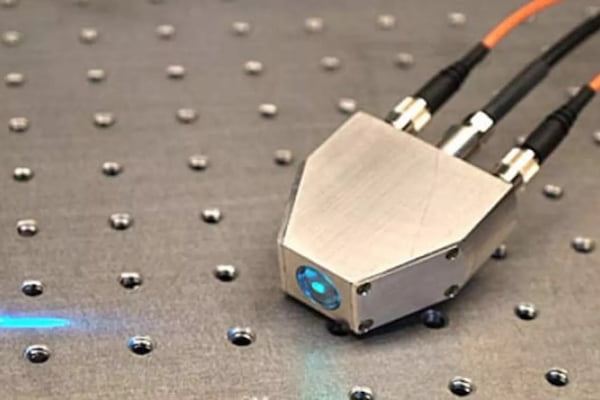Most people consider themselves to be honest. There are certain types of questions, though, that seem to prompt us to respond evasively, if not downright untruthfully: medical inquiries. And I am as guilty of this truth-stretching tendency as anyone else. Do you floss? (Yes… occasionally.) Do you exercise? (Sure. Sometimes. Does vacuuming count?) Do you drink eight glasses of water every day? (Uh… coffee has water in it, right?)
And then there’s the inevitable nutrition question: Do you eat the recommended amount of fruits and vegetables – nine servings per day?
My kinda-sorta-maybe deflections may soon be a relic of the past, if a new veggie-sensing laser makes its way into doctors’ offices and hospitals in the near future

The non-invasive device, which was developed by University of Utah physicist Werner Gellermann and Yale University epidemiologist Susan Mayne, functions on the principle of Raman spectroscopy. As Fast Co.Exist’s Peter Smith explains, the procedure is easy: a fiber-optic probe is held to a person’s palm or inner forearm for about 30 seconds, and a blue laser beam shines onto the skin to measure the amount of carotenoids present. (Carotenoids are compounds like beta-carotene, lutein, and lycopene that give vegetables their color.) The more vegetables a person consumes, the more carotenoids are present in his body; the more carotenoids that are present, the greener his skin will appear under the laser.
It’s as simple as peas and carrots.
The researchers’ findings, published in The American Journal of Clinical Nutrition, could have profound implications for the medical industry. Previous to this breakthrough, the only way to detect these nutrients was by performing a “dermal posterior hip biopsy” – essentially, by punching a three-millimeter hole in the skin (ow). A non-invasive, painless, portable veggie-detecting-device could revolutionize the way we measure and regulate nutrition levels in our bodies.
As Smith points out, data of this sort may provide valuable information for dietary interventions: “How does diet tie in with the risk of developing cancer?” he asks. “Do people receiving federally financed supplemental nutrition eat more vegetables when they live near farmers’ market that double the value of food stamps?”
But, being the cautious skeptic that I am, I wonder if the consequences of this technology might have the potential to be overly invasive. What if health care companies begin measuring carotenoid levels as a screener for insurance premiums? Or government agencies use the test results to grant or deny social assistance through food stamp nutrition programs like SNAP and WIC?
Technological advancements of this sort inevitably raise the question: should what we choose to put in our bodies be subject to regulation simply because it can be measured?
For now, the veggie-detector is undergoing further testing at U.S. Department of Agriculture laboratories to determine its efficacy. In the meantime, I’ll be sure to work on getting those nine servings of fruits and veggies into my daily routine, popcorn nonwithstanding. And while I’m at it, drink a couple of glasses of water. And exercise. And floss. I promise this time. Okay, doc?
